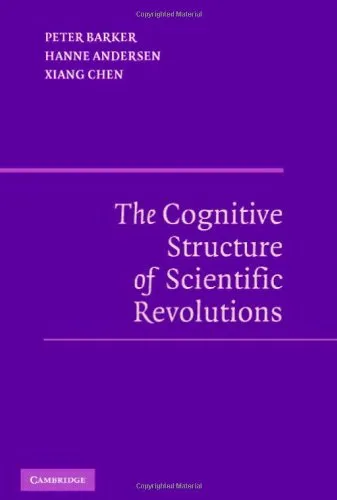The Cognitive Structure of Scientific Revolutions
4.6
Reviews from our users

You Can Ask your questions from this book's AI after Login
Each download or ask from book AI costs 2 points. To earn more free points, please visit the Points Guide Page and complete some valuable actions.Related Refrences:
Introduction to 'The Cognitive Structure of Scientific Revolutions'
The fusion of philosophical inquiry and cognitive science has exposed rich, nuanced insights about the nature of scientific change. 'The Cognitive Structure of Scientific Revolutions' compels readers to rethink classic narratives about how scientific paradigms evolve and transform.
Detailed Summary of the Book
Building upon the foundational theories introduced by Thomas Kuhn, 'The Cognitive Structure of Scientific Revolutions' delves into the intricate cognitive processes that underpin scientific shifts. Unlike traditional perspectives that view paradigm shifts primarily as social phenomena, this book investigates the underlying cognitive structures that facilitate or impede these transformations. It examines how scientists' mental frameworks, conceptual change, and cognitive limitations influence the trajectory of scientific thought.
Through meticulous analysis, the authors explore the interplay between individual cognitive capacities and collective scientific advancements. They illuminate how factors such as analogy, similarity, and categorization contribute to the gradual or abrupt reshaping of scientific paradigms. The work underscores the importance of cognitive diversity in fostering scientific innovation, as well as the role of cognitive biases in sustaining obsolete paradigms.
Key Takeaways
- Cognitive science offers crucial insights into the nature of scientific knowledge and its evolution over time.
- Scientific revolutions are deeply interwoven with cognitive processes such as analogy and categorization rather than being solely social or historical events.
- Diverse cognitive approaches among scientists can lead to more robust scientific inquiry and breakthroughs.
- Recognizing cognitive biases in scientific communities can aid in overcoming entrenched paradigms that may hinder progress.
Famous Quotes from the Book
“By exploring the cognitive landscapes of scientists, we unravel the mental terrain where revolutionary thoughts are born.”
“Cognitive plurality, much like biodiversity in nature, strengthens the ecosystem of scientific thought.”
Why This Book Matters
In today's rapidly evolving scientific environment, 'The Cognitive Structure of Scientific Revolutions' stands as a pivotal contribution that bridges the gap between philosophical theory and cognitive science. It challenges traditional paradigms and encourages reevaluation of the mechanisms driving scientific progress. By foregrounding the cognitive aspects of scientific practice, this book not only deepens our understanding of past scientific revolutions but also equips us with tools to better navigate future ones.
For scientists, philosophers, and educators alike, this work offers a transformative perspective on the engines of scientific change. Its emphasis on cognitive processes provides valuable insights into how breakthroughs can be nurtured and sustained, ultimately advancing the collective knowledge of our world.
Free Direct Download
You Can Download this book after Login
Accessing books through legal platforms and public libraries not only supports the rights of authors and publishers but also contributes to the sustainability of reading culture. Before downloading, please take a moment to consider these options.
Find this book on other platforms:
WorldCat helps you find books in libraries worldwide.
See ratings, reviews, and discussions on Goodreads.
Find and buy rare or used books on AbeBooks.
1238
بازدید4.6
امتیاز50
نظر98%
رضایتReviews:
4.6
Based on 0 users review
"کیفیت چاپ عالی بود، خیلی راضیام"
Questions & Answers
Ask questions about this book or help others by answering
No questions yet. Be the first to ask!



